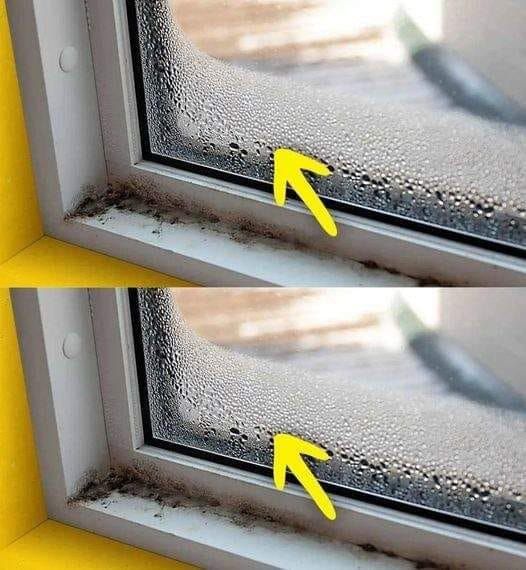Excessive humidity in your home can lead to various problems, from discomfort to health issues and even damage to your property. It creates an environment for mold growth, musty odors, and dust mites, which can aggravate allergies. In more extreme cases, long-term humidity problems can even cause the wood in your furniture or floors to warp. Fortunately, managing and reducing humidity in your home doesn’t have to be complicated. In this article, we will share 7 simple and effective tips to eliminate humidity in your house, making your living space more comfortable and healthier.
What Causes Humidity in the House?
Before we dive into how to reduce humidity, it’s important to understand the main causes:
- Weather: High outdoor humidity, especially during hot and rainy days, can seep into your home if there are leaks or poor insulation.
- Cooking: Steaming food, boiling water, or simmering creates moisture in the air.
- Showers: Taking hot showers generates steam, contributing to indoor humidity.
- Drying Clothes Indoors: Wet clothes release moisture into the air as they dry.
- Leaks: Leaky pipes or roof leaks can introduce moisture into your home.
- Poor Ventilation: Without adequate air circulation, moisture becomes trapped indoors.
Now that we understand why humidity occurs, here are 7 simple tips to help reduce it.
1. Use a Dehumidifier
One of the most effective ways to combat excess humidity is by using a dehumidifier. These devices work by drawing in the moist air, extracting the water, and releasing dry air back into the room. Dehumidifiers come in different sizes, so you can choose one based on the size of the room or the entire house.
- Tip: Empty the water tank regularly to maintain efficiency.
- Bonus: Many dehumidifiers also come with a humidistat that helps you monitor and maintain the desired humidity levels, usually between 30% to 50%.
2. Improve Ventilation
Good airflow helps prevent moisture from building up in your home. If your home is poorly ventilated, the humidity has nowhere to escape, which makes it easy for mold and mildew to grow.
- Tip: Open windows and doors when the weather permits, and use fans to circulate air.
- Bonus: Install exhaust fans in areas like the kitchen and bathroom, where humidity tends to build up. If you don’t have built-in fans, portable fans can also help.
3. Fix Leaks and Seepage
Water leaks are a major cause of excessive humidity in a house. Whether it’s from a leaking pipe, a damaged roof, or water seeping through the foundation, moisture from these sources can lead to dampness indoors.
- Tip: Inspect your home regularly for leaks in plumbing, roofing, or around windows and doors. Seal any gaps and repair leaks promptly to prevent moisture from entering your home.
- Bonus: Ensure your gutters are clean and functional to prevent water from spilling into your house.
4. Use Absorbent Materials
There are many natural materials that can help absorb moisture in your home. These materials can be placed in areas prone to excess humidity, such as closets, bathrooms, and basements.
- Tip: Silica gel packets, activated charcoal, and moisture-absorbing crystals (such as calcium chloride) can all help reduce moisture levels. Place them in small containers or sachets around damp areas.
- Bonus: Baking soda is another excellent moisture absorber and can be placed in bowls in rooms that tend to be more humid, like bathrooms and kitchens.
5. Control Moisture from Cooking and Showering
Cooking and taking showers are daily activities that can significantly increase indoor humidity. It’s important to manage this moisture to keep humidity levels under control.
- Tip: Use a range hood or exhaust fan while cooking to pull moisture from the air.
- Tip: When taking a shower, keep the bathroom door closed to contain steam, and always use an exhaust fan to ventilate the room. If you don’t have an exhaust fan, consider installing one.
- Bonus: Consider taking cooler showers or using lower heat settings when cooking to minimize steam production.
6. Use Desiccants in Small Areas
In smaller spaces such as closets, cabinets, and drawers, it’s easy for moisture to accumulate unnoticed, especially in damp areas. Using desiccants can help absorb excess humidity and prevent the growth of mold and mildew.
- Tip: Place desiccants like silica gel, activated charcoal, or even homemade rice bags in closed spaces to absorb moisture. You can purchase desiccant bags or make your own by filling fabric sachets with rice or cat litter.
- Bonus: If you don’t have access to desiccants, simply leaving the door or cabinet slightly ajar can allow air circulation and help dry out the space.
7. Maintain Proper Temperature
The temperature in your home plays a huge role in controlling humidity. Warm air can hold more moisture, which can increase humidity levels. Conversely, cooler air tends to have lower humidity. Keeping your home at a consistent, moderate temperature can help maintain balanced humidity levels.
- Tip: Use an air conditioner to cool your home and reduce humidity, especially in hot, humid months. Air conditioners also act as dehumidifiers by pulling moisture from the air.
- Bonus: In colder months, avoid excessive use of space heaters, as they can make the air dry, but this may cause fluctuations in humidity that could promote condensation.
Bonus: Use Houseplants Wisely
Houseplants can add moisture to the air through a process known as transpiration, but they can also help maintain humidity in a controlled way. Some plants, like ferns or peace lilies, are great at absorbing moisture from the air. However, overwatering plants can lead to excess moisture, contributing to humidity problems.
- Tip: Keep a balance when caring for plants. Avoid overwatering and ensure your plants are not growing in overly damp conditions.
- Bonus: Consider keeping humidity-loving plants in more humid areas of the house, such as the bathroom, where their moisture contribution can help maintain a balanced level of humidity.
Final Thoughts
Dealing with excess humidity in your house doesn’t have to be overwhelming. By taking small but effective steps, you can eliminate or reduce humidity and create a more comfortable living environment. Whether it’s using a dehumidifier, improving ventilation, fixing leaks, or making simple adjustments to daily habits, these 7 tips will help you combat moisture-related issues.
Remember, maintaining balanced humidity levels not only helps prevent mold and mildew growth but also promotes a healthier living space and protects your home from long-term damage. Keep humidity in check, and you’ll enjoy a fresher, more comfortable home all year round!




